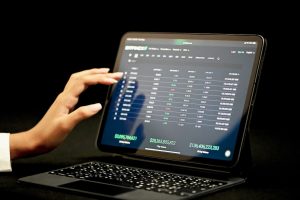Divergence is a popular trading strategy used by forex traders to identify potential trend reversals in the market. It occurs when the price of an asset moves in the opposite direction of an indicator, indicating a weakening of the current trend. By identifying divergences, traders can make informed decisions on when to enter or exit a trade, thereby increasing their chances of profitability. In this article, we will discuss how to find divergence in forex by looking at some of the most commonly used indicators.
What is Divergence?
Divergence occurs when the price of an asset moves in a different direction from an indicator. It is a sign that the current trend may be weakening, and a potential reversal may be on the horizon. There are two types of divergence: bullish and bearish. Bullish divergence occurs when the price of an asset is making lower lows, while the indicator is making higher lows. This indicates that the selling pressure is decreasing, and the price may soon start to rise. On the other hand, bearish divergence occurs when the price of an asset is making higher highs while the indicator is making lower highs. This indicates that the buying pressure is decreasing, and the price may soon start to fall.
How to Find Divergence in Forex?
Finding divergence in forex involves using technical indicators to identify potential trend reversals. Here are some of the most commonly used indicators for identifying divergence:
1. Relative Strength Index (RSI)
The RSI is a momentum oscillator that measures the strength of an asset’s price action. It oscillates between 0 and 100, with readings above 70 indicating overbought conditions and readings below 30 indicating oversold conditions. When the price of an asset is diverging from the RSI, it indicates a weakening of the current trend. For example, if the price of an asset is making higher highs while the RSI is making lower highs, it may indicate a potential trend reversal.
2. Moving Average Convergence Divergence (MACD)
The MACD is a trend-following momentum indicator that uses moving averages to identify potential trend reversals. It consists of two lines: the MACD line and the signal line. When the MACD line crosses above the signal line, it indicates a potential bullish trend reversal, while a cross below the signal line indicates a potential bearish trend reversal. Divergence can be identified when the price of an asset is moving in the opposite direction of the MACD line.
3. Stochastic Oscillator
The Stochastic Oscillator is a momentum indicator that compares an asset’s closing price to its price range over a period of time. It oscillates between 0 and 100, with readings above 80 indicating overbought conditions and readings below 20 indicating oversold conditions. Divergence can be identified when the price of an asset is moving in the opposite direction of the Stochastic Oscillator. For example, if the price of an asset is making higher highs while the Stochastic Oscillator is making lower highs, it may indicate a potential trend reversal.
4. Commodity Channel Index (CCI)
The CCI is a momentum oscillator that measures the deviation of an asset’s price from its statistical average. It oscillates between -100 and +100, with readings above +100 indicating overbought conditions and readings below -100 indicating oversold conditions. Divergence can be identified when the price of an asset is moving in the opposite direction of the CCI. For example, if the price of an asset is making higher highs while the CCI is making lower highs, it may indicate a potential trend reversal.
Conclusion
Finding divergence in forex involves using technical indicators to identify potential trend reversals. The most commonly used indicators for identifying divergence include the Relative Strength Index (RSI), Moving Average Convergence Divergence (MACD), Stochastic Oscillator, and Commodity Channel Index (CCI). By identifying divergences, traders can make informed decisions on when to enter or exit a trade, thereby increasing their chances of profitability. However, it is important to note that no trading strategy is foolproof, and traders should always use proper risk management techniques when trading forex.





